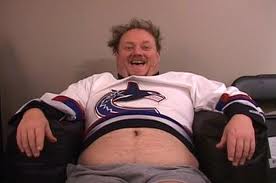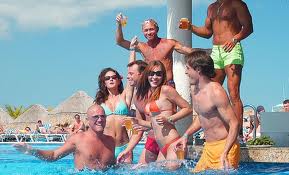As the hockey season progresses, fatigue accumulates. In other words, the intensive energy that most players bring into the season begins to fade somewhere around the mid-point of the season (near January) and a cascade of deleterious effects on performance follows.
Ultimate In-Season Performance Factors
Factor 1: The Diet
Depending on the sport, it’s not unusual for some players to drop between 5-10 lbs in the first month or so of the season. In the case of athletes coming off a lazy off-season, this may not be a bad thing as the weight is likely UNDESIRABLE body fat. Alternatively, the athletes that follow a well-designed training program during their off-season and drop weight when the season starts probably don’t have as much fat to spare and are losing DESIRABLE muscle mass.
Despite the differential outcome, athletes in both situations need to pay better attention to their nutrition. The overwhelming majority of athletes are malnourished, despite sometimes being overfed. This results from a combination of a lack of knowledge/education on healthy eating (no thanks to the crap-perpetrating of the controversy-hungry media) and a lack of support (intentionally or unintentionally) of friends and family. As I mentioned on Monday (Hockey Nutrition Coaching), most people are grossly misinformed about their caloric intake needs. Hopefully the equation I presented in that post helped give you an idea of the HUGE number of calories that you burn just to sustain life, let alone as a result of digesting/absorbing food and physical activity. On top of those numbers, the per pound caloric needs of teenagers are about 1.5x that of adults.

In-season players need more of this stuff. (…so do off-season, pre-season, and post-season players)
For example, to maintain body weight a moderately active adult should consume about 15x their body weight in pounds:
A 180lb adult should consume: 180 x 15 = 2,700 calories/day
A moderately active teenager should consume closer to 22x his/her body weight in pounds:
A 135lb teenager should consume 135 x 22 = 2,970
This relative extra intake goes toward growth and development. What most young athletes fail to account for is the drastic increase in physical activity that coincides with the initiation of a new season (between around 500 and 1,000 calories per ice session depending on their size, skating intensity, ice time, etc.). To oversimplify weight maintenance, energy intake (calories from food) needs to match energy expenditure (calories burned from resting metabolism, digestion/absorption of food, and physical activity). If an athlete transfers from training hard four times per week in the off-season (what we recommend) to training hard twice, practicing 3-5 times and playing a game or two per week, their energy expenditure skyrockets. In order to adequately fuel for optimal performance, energy intake needs to increase substantially as well. If not, muscle will be lost and performance will suffer.
Factor 2: Hormonal Recovery
Our hormones, most relevantly those that contribute to anabolic (build-up) and catabolic (break-down) functions, are in a constant state of flux. These hormones increase and decrease in concentration based on the stressors we experience. If we train/play hard and fuel ourselves appropriately, this hormonal balance is optimized. If, as is the case in-season, we train/play hard, but fuel ourselves sub-optimally (in both total intake and food choices), the balance will tip toward catabolism (breakdown). In this case, catabolic hormones like cortisol become relatively high and tell the body to store fat and breakdown muscle; it’s a survival response.

Ryan Kesler with high cortisol levels?
Unfortunately, this balance isn’t as simple as optimizing training stimuli and nutrition. ALL of the stressors in life contribute. While transitioning from the summer to fall sports, most athletes have to also deal with school starting, which is a source of stress itself.

Pythagorean what? Why do I need to know this!
It also requires a transitional period as student-athletes adapt to the new schedule. While hormonal profiles require specific medical tests, there’s a simple way to assess if you’re on the right track or not.
Every morning, before you roll out of bed, take your heart rate by finding your pulse (either on your wrist or neck). Count the beats for a 20s time period and multiply by 3 to find your resting heart rate in beats per minute. Do this every morning and write down what you find. If your resting heart rate elevates by 10+ beats per minute, that’s a pretty good sign that you aren’t recovering from the stressors in your life (both sports and non-sports related).
If this is the case, start by assessing your nutrition and by dialing back your training a bit (I’ve actually sent people home form Endeavor when I think they’re headed down this path). It’s also important to regulate your sleep schedule. I understand how difficult (nearly impossible) this is for teenage athletes, but the more consistent you are in when you go to bed and when you wake up, the better you’ll feel and perform. As a general rule, the goal is to go to sleep and wake up within an hour of the weekly-schedule on the weekends. If more sleep is needed, a 30-60 minute nap mid-morning is a healthy alternative, but the 12-hour weekend hibernations typical of most teenagers should be avoided.
Factor 3: In-Season Training
I’ve touched on this before so I won’t belabor the point, but too many hockey players make the mistake of ceasing their strength and conditioning programs (or athletic development programs) when the season starts. The goal of these programs is to improve the player’s quality movement, strength, speed, power, and conditioning capacities. All of these qualities require maintenance or they will degrade (some more quickly than others). Degraded capacity directly translates into degraded performance and increased injury risk. The nature of the training will NEED to change to account for the demands of sport practices and games, but all athletes should continue to train in-season.
Inevitably, I’ll get a dozen or so emails about 2 months after the Summer ends former players we’ve trained at Endeavor that left when the Fall came saying how great they felt at the beginning of the season, how they stopped training altogether, and how terrible they feel now. They then usually inappropriately default to reusing off-season training programs to try to “get it all back” in the shortest time possible, and feel even worse as the total combined intensity and volume of training, practice, and competition is too much for the body to acclimate to. Consistency is paramount; intelligent fluctuations in the training program are equally essential.
Concluding Thought
As a final tip, everyone (athletes, coaches, parents, etc.) should get their Vitamin D levels checked at least twice per year (to start). The importance of Vitamin D in various aspects of health and energy is becoming increasingly highlighted by recent research, and most people are deficient. The current recommendation to meet Vitamin D requirements is 30 minutes of direct sunlight around noon, most days of the week. From a practical standpoint, this is laughable. Not many students, parents, or athletes are afforded the opportunity to strip down to a bathing suit and frolic around outside for 30 minutes in the middle of the day.

Oh it’s noon! Time for our daily vitamin D break!
Also, sunlight exposure opportunities decrease dramatically during the colder months. This is a largely overlooked factor in the January/mid-season energy slump that most hockey players go through. As a result, supplementation becomes essential. Get your levels checked a couple times a year to ensure that you’re avoiding a health and performance deteriorating deficiency.
To your success,
Kevin Neeld